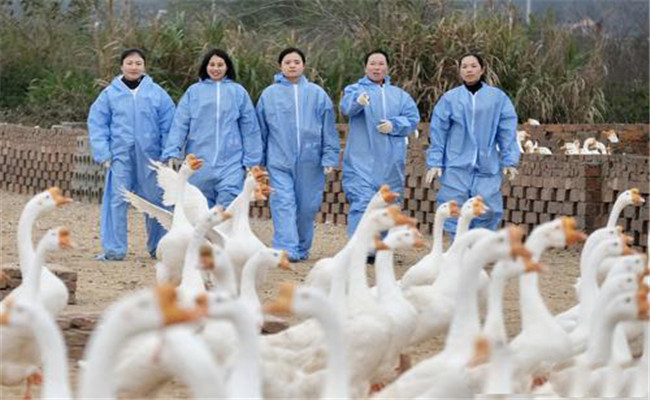In the rainy summer and fall seasons, chickens often occur a disease mainly characterized by whitening of the crown, which brings large economic losses to the chicken industry, which is the Kahn’s residence leukocytosis, also known as white crown disease.
Clinical Symptoms The symptoms of this disease are obvious in chicks, with elevated body temperature, loss of appetite, depression, salivation, yellowish-white or yellowish-green scanty feces, stunted growth and development, loose feathers, walking, respiratory difficulties, and clucking blood. Laying hens generally have a decrease in egg production rate of about 10%. The most obvious characteristic of all sick chickens is anemia, and the crown is pale. Dissection of sick chickens reveals emaciation of the carcass, thinning of the blood, and pallor of the muscles all over the body. The liver and spleen were enlarged, with hemorrhagic spots on the surface, and there were white nodules as large as corn grains on the liver. The digestive tract was congested and there was blood and water in the abdominal cavity. Bleeding in the kidneys and pinpoint hemorrhages on the leg muscles and pectoral muscles. According to the onset of the season, clinical symptoms and autopsy changes can be made a preliminary diagnosis, combined with the blood smear microscopic examination to see the worm can be diagnosed.
Preventive measures The main measure to prevent this disease is to extinguish the midge, the vector. In the epidemic season, the inside and outside of the chicken house should be sprayed with insecticide every week, such as 0.01% trichlorfon solution, etc. In the epidemic season, the chicken house should be sprayed with insecticide every week. In the epidemic season, add drugs in the chicken feed for prevention, such as tamoxifen, lovely Dan and so on. When this disease occurs, the first choice for treatment is Taifenpure, the original powder dosage of l grams of 2.5 kg of feed, fed for 5 to 7 days. Can also be used to enhance the sulfadiazine, chickens per kilogram of body weight orally 25 mg, the first time the amount can be doubled, served for 3 ~ 4 days. Chloroquine can also be used, 100 milligrams per kilogram of body weight of chickens orally, once a day, for 3 days, and then every second day for 3 days. Pay attention to alternate medication.
Post time: Sep-21-2023





